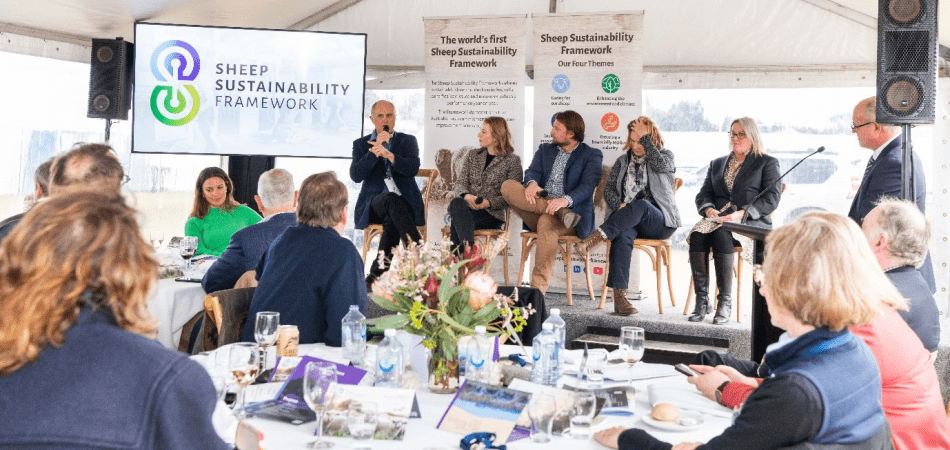 On 15 July 2022, the first ever Annual Report of the Sheep Sustainability Framework was unveiled at the Australian Sheep and Wool Show in Bendigo. The report was the first fruit of the Australian sheep and wool industry’s commitment to creating a data-driven yearly snapshot of its performance in matters relating to sustainability. International Wool Textile Organisation explores some of the most important points revealed in the report.
On 15 July 2022, the first ever Annual Report of the Sheep Sustainability Framework was unveiled at the Australian Sheep and Wool Show in Bendigo. The report was the first fruit of the Australian sheep and wool industry’s commitment to creating a data-driven yearly snapshot of its performance in matters relating to sustainability. International Wool Textile Organisation explores some of the most important points revealed in the report.
A World First
The report is the first of its kind and will go a long way towards improving sustainability in the sheep industry. It emerged from the Sheep Sustainability Framework (SSF), led by Sheep Producers Australia (SPA) and Wool Producers Australia (WPA). The SSF focuses on four themes: caring for sheep, enhancing the environment and climate, taking care of all stakeholders in the industry, and ensuring financial resilience for the industry. The report measures the extent to which the industry is meeting these goals, in light of a nine focus areas and 21 priorities.
Read Next: Can Sheep Save the Planet?
Key Findings from The Report
The first annual report of the SSF revealed the following important points, among others:
- The Australian sheep industry is climate neutral as of 2021, and has held steady on net emissions. Gains in productivity have driven emissions intensity down by nine per cent between 2005 and 2020.
- Rates of ground cover have improved, with 63.4pc of sheep grazing land over 50pc ground cover since summer 2019.
- Worms and breech flystrike are among the biggest health challenges for the industry. Genetic improvement is one of the measures being used to prevent disease.
- The industry is rapidly shifting away from the practice of mulesing. Non-mulesed and ceased-mulesed wool has increased as a proportion of the total clip (exact figures to be released in the mid-year update report).
Lucinda Corrigan, Independent Chair of the SSF Board says the report is an evolving document with more indicators under development. “In order to be able to create the data needed for the Annual Report, we undertook a Life Cycle Assessment of the entire Australian flock to determine the carbon footprint of our industry,” she explained. “We also harnessed satellite imagery to measure and display vegetation changes across our sheep-grazing regions. The deep insights generated from these projects represent an important development in our understanding of the impacts on and of our 234-year-old industry.”
The report is available to download on the SSF website.
Learn All You Need to Know About the International Wool Industry
For more information on the wool industry around the world, take a look at our fact sheets, statistics and guidelines.
Now Read: Wool Farm Economics 101
